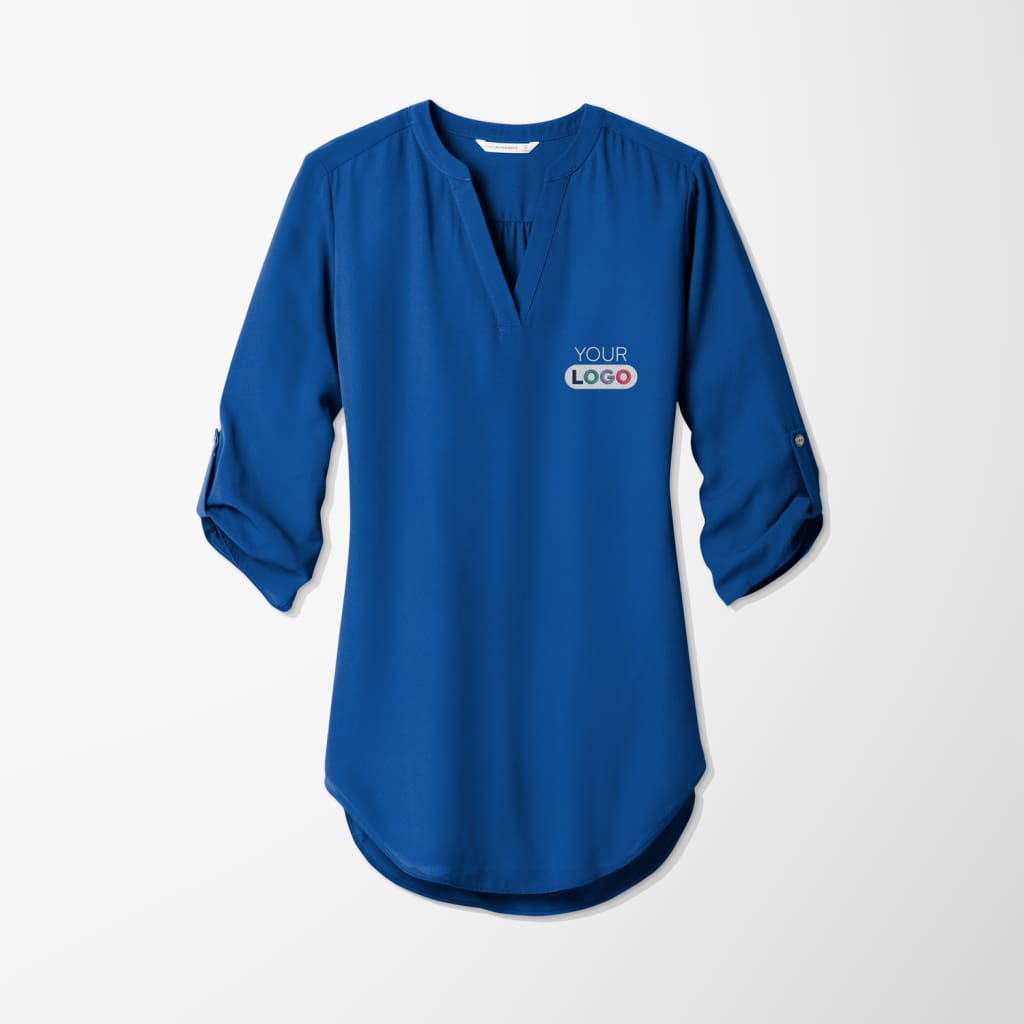How Sustainable Fabric Trends Are Shaping Branded Clothing Collections
How Sustainable Fabric Trends Are Shaping Branded Clothing Collections
Blog Article
The Relevance of Lasting Clothing: Exactly How It Influences the Atmosphere and Your Wardrobe
Sustainable apparel is increasingly acknowledged for its important duty in reducing the ecological influence of the fast fashion business. By concentrating on environment-friendly products and ethical production techniques, it addresses pressing eco-friendly issues. This shift not only benefits the earth yet additionally affects consumer choices, resulting in an extra thoughtful strategy to closet administration. Understanding these characteristics raises essential inquiries concerning style's future and personal obligation in shaping it.
The Environmental Footprint of Quick Fashion

Benefits of Lasting Products
Lasting materials offer significant advantages, specifically through environment-friendly textile choices that lessen environmental injury. These materials additionally show resilience and longevity, decreasing the requirement for frequent replacements. As a result, they add to an extra sustainable apparel industry and promote liable consumer actions.
Eco-Friendly Textile Selections
While the style sector has long been linked with quick fads and environmental damage, the increase of eco-friendly material options offers a transformative opportunity. Sustainable products such as natural cotton, hemp, and Tencel have gotten popularity because of their reduced ecological impact. These materials are commonly created without damaging pesticides and call for much less water, reducing their carbon impact - Branded Clothing. Furthermore, several eco-friendly textiles are eco-friendly, adding to a round economic climate by reducing waste. Choosing sustainable products not only supports eco liable practices but also advertises healthier communities. As customers come to be extra familiar with their purchasing power, the demand for environment-friendly textiles encourages brands to introduce and embrace even more lasting manufacturing approaches, inevitably profiting the earth and future generations
Durability and Long Life Advantages
Several customers are significantly acknowledging the toughness and longevity benefits of sustainable materials in their clothes choices. Unlike traditional materials, lasting materials such as organic cotton, hemp, and recycled polyester are crafted to hold up against wear and tear, causing garments that last much longer. This lowered regularity of replacement not just conserves customers cash gradually yet additionally decreases waste created by quick style. On top of that, sustainable apparel commonly uses green manufacturing techniques that enhance fabric toughness, adding to a decrease in the general carbon impact. By purchasing sturdy garments, customers can grow an extra sustainable wardrobe while delighting in high-grade pieces that maintain their visual and functionality over time. Subsequently, sturdiness and long life stand as key benefits of selecting sustainable materials.
Reducing Waste Through Sustainable Practices
Lowering waste in the fashion industry can be achieved via ingenious practices such as upcycling and repurposing products. Furthermore, taking on minimalist closet techniques motivates customers to focus on high quality over quantity, ultimately decreasing garments intake. Together, these approaches contribute significantly to an extra sustainable clothing version.
Upcycling and Repurposing Products
Upcycling and repurposing materials have arised as innovative approaches in the fashion market, changing disposed of textiles right into valuable brand-new products. This approach not only minimizes waste yet also urges imagination and individuality in clothes style. By taking old garments and products, designers can develop distinct items that reflect personal style while lowering the demand for brand-new sources. Furthermore, upcycling often requires much less power and water contrasted to traditional manufacturing procedures, significantly reducing the ecological impact of fashion. As consumers come to be extra knowledgeable about sustainability, the appeal of upcycled clothing proceeds to climb, promoting a round economic climate. Eventually, these methods contribute to a much more lasting future, where style prioritizes environmental health and wellness over rapid manufacturing and consumption.

Minimal Wardrobe Techniques
As people increasingly seek to lessen their ecological effect, embracing minimal closet techniques has acquired grip as an effective method to sustainable fashion. These approaches emphasize quality over quantity, encouraging customers to curate a smaller collection of flexible, sturdy apparel. By focusing on timeless pieces that can be blended and matched, individuals can decrease the regularity of acquisitions and inevitably lower waste.Additionally, minimalism promotes conscious intake, urging shoppers to reflect on the ethical and environmental ramifications of their choices. This approach not just cultivates a much more sustainable way of life but likewise streamlines day-to-day decision-making concerning clothing. As people accept minimal principles, they add to a fashion society that values sustainability and accountable consumerism, inevitably bring about an extra eco-conscious society.
The Function of Moral Labor in Lasting Fashion
While lots of you could check here consumers are increasingly knowledgeable about the environmental effects of their garments options, the importance of moral labor practices in lasting style can not be overlooked. Ethical labor encompasses fair wages, safe working conditions, and respect for workers' legal rights, forming the backbone of responsible style production. Brands that focus on ethical labor not just boost communities however also established a criterion for liability in the industry.Moreover, the assimilation of honest methods promotes transparency, enabling customers to make enlightened options about their acquisitions. This technique contrasts dramatically with rapid fashion's unscrupulous labor versions, which commonly prioritize revenue over people. By supporting business devoted to moral labor, customers contribute to a system that values human dignity along with ecological sustainability. Consequently, moral labor is not simply an add-on; it is necessary to the wider objective of sustainable fashion, guaranteeing that the mission for eco-friendliness does not come with the expense of human legal rights.
The Effect of Lasting Clothes on Carbon Emissions
Sustainable clothes has the prospective to greatly reduce carbon discharges connected with the fashion business. Traditional garment production contributes significantly to greenhouse gas discharges, mainly as a result of energy-intensive production processes and using non-renewable resources. On the other hand, sustainable style concentrates on environmentally friendly products, such as organic cotton or recycled fibers, which typically require less energy to produce.Moreover, lasting brand names often tend to take on a lot more reliable manufacturing techniques, lessening waste and reducing overall discharges. By focusing on resilience and classic layout, sustainable clothing urges consumers to get less regularly, additional lowering the carbon footprint related to overconsumption.Additionally, many lasting brands are committed to transparency in their supply chains, enabling consumers to make enlightened selections that straighten with their values. Inevitably, changing towards lasting clothing can cause a substantial decrease in carbon discharges, contributing to a healthier earth and a much more sustainable future for the apparel industry.
Sustaining Regional Economic Situations With Sustainable Choices
The shift toward sustainable apparel not only addresses ecological worries but additionally considerably advantages local economic climates. By picking lasting fashion, customers frequently sustain small services and neighborhood craftsmens, improving area resilience. These enterprises normally operate a smaller sized scale, prioritizing craftsmanship and ethical methods over mass production.Investing in locally made lasting garments promotes job production and stimulates economic development within communities. As customers end up being more familiar with the environmental impact of their purchases, they significantly seek out products that reflect their worths. This need motivates neighborhood makers to embrace sustainable practices, contributing to a round economy.Moreover, supporting neighborhood organizations minimizes transport exhausts, aligning with eco-conscious consumer habits. The interconnectedness of sustainable clothing why not try these out and neighborhood economies underscores the important function that specific options play in promoting both ecological and economic health and wellness. By fostering these neighborhood links, communities can grow while also functioning towards a more sustainable future.
Changing Your Wardrobe: Tips for a Lasting Wardrobe
As individuals seek to minimize their environmental effect, transforming a wardrobe right into a sustainable wardrobe becomes a crucial action. One effective technique is to evaluate existing clothing, keeping just products that are used consistently which straighten with sustainability objectives. Focusing on quality over quantity is important; investing in resilient items from environmentally friendly brands can considerably reduce waste.Additionally, incorporating used products can take a breath brand-new life right into a closet while minimizing ecological damages. Organizing clothing swaps with pals or contributing unused items can better promote sustainability.When buying, people should look for products that are organic, recycled, or eco-friendly, and stay clear of rapid fashion sellers - Branded Clothing. Lastly, practicing conscious consumption by attentively thinking about each purchase can add to a much more lasting way of living. By executing these tips, one can develop a wardrobe that shows personal design while supporting environmental stewardship
Frequently Asked Inquiries
How Can I Determine Lasting Garments Brands?
To recognize lasting clothing brand names, one ought to research materials used, inspect for qualifications like Fair Profession, and analyze the brand name's openness about their production processes, labor techniques, and ecological effect, making certain honest and environment-friendly practices are focused on.
What Are the Expenses Associated With Sustainable Style?
The costs related to lasting style can differ considerably. Higher manufacturing expenditures, moral sourcing, and eco-friendly products typically lead to increased market prices, which may hinder some consumers while interesting eco aware consumers.
Can Lasting Clothing Be Trendy and Trendy?
Sustainable clothing can without a doubt be trendy and fashionable. Developers increasingly focus on innovative products and ethical manufacturing methods, verifying that fashion and sustainability can exist side-by-side. Customers now have diverse alternatives that blend visual appeals with ecological consciousness.
Exactly How Does Laundering Clothes Affect Their Sustainability?
Cleaning garments greatly influences sustainability by consuming water and power, adding to air pollution, and causing microplastic release. Frequent link washing can break down textiles, reducing their lifespan and boosting the demand for substitutes, ultimately exacerbating environmental worries.
What Is the Life Expectancy of Lasting Clothing Compared to Fast Fashion?
The lifespan of sustainable clothing commonly surpasses that of quick fashion items, often lasting several years as a result of high quality products and craftsmanship. In comparison, quick style garments might degrade promptly, demanding more frequent replacements. Lasting clothing is significantly recognized for its important role in decreasing the ecological effect of the fast style sector. While many customers are significantly conscious of the environmental consequences of their clothing choices, the relevance of honest labor techniques in sustainable style can not be neglected. Branded Clothing. Lasting garments has the prospective to substantially lower carbon discharges connected with the style sector. In contrast, sustainable style concentrates on green materials, such as natural cotton or recycled fibers, which typically need less energy to produce.Moreover, sustainable brands tend to adopt much more efficient manufacturing practices, minimizing waste and decreasing total discharges. By prioritizing toughness and ageless style, sustainable garments motivates consumers to get less frequently, more lowering the carbon footprint connected with overconsumption.Additionally, several lasting brands are dedicated to transparency in their supply chains, making it possible for customers to make informed options that align with their worths
Report this page